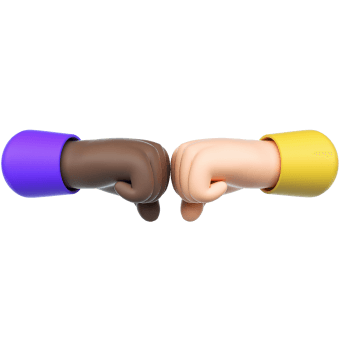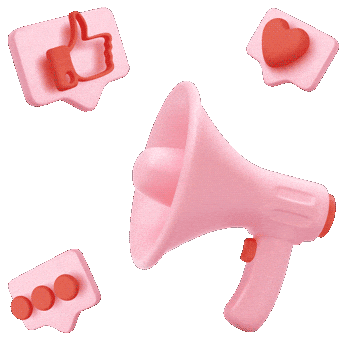Warming up the audience in social media: good and bad methods

“Buy from me! Don’t feel like that? But what would you say if I twerked for you and told you my product would no longer be available the next day?”
Content strategy specialist Elena Ryzhkova tells what manipulative warm-ups are and what to use instead of them to generate more traffic and leads on social media, promote, and sell products more effectively.
How it worked before
Manipulative warming, which was widely used on Instagram in 2020 and in early 2021, is no longer effective. Fake emotions, rough triggers, and hype-inducing talk show methods can’t be potent demand generators anymore.
All manipulative tactics follow all the similar scenarios.
- Stage 1. A blogger shares a Story where she has a fight with her husband. She cries and plans a divorce.
- Stage 2. She makes things right with her husband, cancels the divorce, and mentions a mysterious family repairing instrument.
- Stage 3. She shows the screenshots of messages she receives from other users. Everyone starts asking what the product is.
- Stage 4. She surrenders and tells about the product. And it appears to be a conscious relationship and gratitude to the husband. She keeps saying that she would source information from therapists and scientists, take everything to the heart, and then apply. And voila, here comes the miracle. She can’t keep this technique a secret and wants other families to be happy. To pursue this goal, she is starting her first and last marathon titled “Close-Knit Family.”
At the first stage, the blogger shows her vulnerability and weakness, arouses compassion, and demonstrates the audience’s biggest pain, an unhappy relationship, by personal example.
The second stage brings unexpected development. Roses, kisses, and plenty of love cancel the divorce, and thus the blogger builds up the interest through teasers.
Then she makes use of the standard hype and unavailability triggers: “Everyone’s asking but I’ll tell you nothing.”
At the fourth phase, she starts selling. And those sales are powered by some extra triggers, including limited time or quantity. Lastly, of course, she mentions there will only be one marathon with few vacant spots.
As a rule, the fight, the fix-up, and all the hype around the product and limited marathon are usually a fake story.
Such warm-up campaigns may vary in scenarios, but they are the same at the core. Here are the features they all share:
- Wide-reach, relatable pain: appearance, money, relations, success.
- The seller demonstrates their vulnerability and susceptibility to the problems the audience representatives may have (“I also had fights with my husband / had to parent the children alone / had to live in poverty with no support / etc.”).
- Made-up triggers luring people into impulse, emotion-driven purchases, leaving no time to think.
- Fake stories.
Why manipulative warm-ups are no longer effective
- Similar scenarios. Users observe the same stages, triggers, tears, and heart-wrenching emotions. No more effect of sincerity and novelty. Everything is predictable.
- Warm-up blindness (like banner blindness). There were so many manipulative warming cases that users no longer noticed them.
- Technology depreciation. Even little marketing skills and knowledge can help one find out how such scenarios work. With this in mind, online marketing tutors and schools decided to produce courses and “warm-up masters”, who spam their proposals to carry out a manipulative scenario and launch a million-worth product.
- Disappointment of sellers. Even in the best times, one warm-up campaign, with the same scenario and for the same audience, could deliver only one successful case. No blogger would have a divorce once in three months. And while situations may vary, the very core remains the same—making it a very tough task to sell anything. Further sales will need a great flow of new followers, which not every seller can afford.
While major bloggers and star influencers will stick to the conventional warm-ups for some time, by virtue of a large audience, personal authority, and poor consciousness of followers, this technique is no longer a safe solution for experts, infopreneurs, small and medium-sized companies, minor publishers, and middle-level bloggers.
However, the e-commerce market does need warm-ups, since cold audiences are not eager to buy. First, a seller needs to build interest, generate demand, win trust, and encourage a user to buy.
However, the worn-out manipulative warm-ups in digital marketing are replaced by other pre-sale techniques.
Currently relevant warm-ups
Let’s look into two ways to warm up an audience that will help create demand and promote a product.
In front of your eyes
This technique implies that a seller creates a product or demonstrates its effect right in full view of an audience.
This method rests on the presumption that followers:
- Go through all development stages with you.
- Influence the final product: they vote, choose between two alternatives, and express their opinion.
- Can take a look behind the curtain of your business.
- See all product benefits from your side: they understand how many resources and efforts you had to invest.
- See the case appear and grow, instead of getting the final version of it. This is how the case turns more persuasive.
By the moment the product enters the market, it will have already become valuable, familiar, necessary, and “very own.” Just announce the sales start and deploy a few supporting Stories. Manipulative triggers are not needed; the warm-up process goes natively both for the audience and the seller.
Case. Lyubov Soboleva, a blogger, marketer, and PR specialist, drives new followers to her blog in a reality show mode, sharing every step and performance findings with her followers. The central product she sells on her blog is an SMM course. First, Lyubov shows how she uses SMM methods and skills for herself, creating a persuasive case in real-time. Lastly, she invites users to master these skills and methods so they can create their own successful cases.
Here’s another example. We will tell how Elena Ryzhkova, the author of this text, prepared her blog audience for the book she had been writing. She used Instagram.
Stage 1. Announcement, interest stirring.
When 30% of the manuscript was ready, Elena started publishing Stories where she told that she had been working on a large book devoted to composing texts. Then followed a series of stories. She explained how she came up with an idea to create a book and how she brought herself to doing that.
Stage 2. Behind-the-curtain insights, interest amplification, gradual introduction of the product value.
Later, the regular feature “Day of the Book” appeared on Stories. There, Elena would describe how she worked on the book, namely:
- What has been done
- How many chapters the book will have
- What a chapter consists of
- What examples and cases she selected
- What studies were carried out
- What difficulties she faced
Stories often had interactive elements, including votings, tests, and questions.
In fact, this is the same hype trigger. The audience sees how many people have already voted, how many questions about the book Elena received. This makes it get involved in awaiting the product. But the hype is genuine in this case, in contrast to fake stories in manipulative warm-ups. Interest is generated naturally.
Elena mentioned the book in a post once a month to stoke interest and ensure as wide reach as possible.
Stage 3. Contribution to the final product.
When the book was finished and Elena began her work with the publisher (editing, composition, cover design), even more gamification elements were invoked. The readers were allowed to influence how the book will look. Elena would publish cover layouts and ask her followers to help her choose the best one.
Stage 4. Organic activation of the “authority opinion” trigger.
Elena sent the formatted and edited electronic version of the book to six experts, who are respected representatives of the audience, each with much authority and a personal brand. The process was shared on Stories so the users could see who the experts were and what they wrote about the book.
Final stage. Pre-orders.
One month before the release, when the ready-for-printing version was submitted to the printing office, Elena announced the start of pre-orders on Stories and in a post. No extra warm-ups. As a result, 120+ books had been ordered and prepaid before the book actually entered the market. And once the book appeared at stores, organic sales and genuine reviews came, with no fakes or hype.
At the end of the day, Elena invested $0 in promoting her book, only generating sales by means of systemic audience nurturing.
Consistent content chains
Another effective warm-up method is the systemic handling of a user’s interest in a product through content chains (this method is sometimes called text blockchain).
At the heart of this technique is deep processing of the audience’s informational needs at each stage of the introduction to the product. Here’s what you need to think about:
- What to do if the audience hasn’t realized there is a problem the product can solve?
- What do people, having a problem the product solves, want to know but have no confidence the product is really going to help?
- What question do people, who are comparing the product with the alternative solutions, have? Why should they choose you?
At each stage, the audience is offered chains of related posts, stories, videos with responses to their questions and objections. Warming content is seamlessly relevant to the audience’s need for information.
Having sent a question or objection, followers receive substantiated, clear information that consistently leads them to a purchase. Manipulative warm-ups, on the contrary, try to extinguish rational objections with fake emotion-powered triggers.
Systemic and consistent content generation helps switch the following paradigms in the followers’ minds:
- From “I don’t need it” to “It might be interesting.”
- From “It might be interesting to “It will help me.”
- From “It will help me” to “It will change my life for the better. I need it!”
- From “I need it!” to “I need to buy it from this very seller, right now.”
Below is a case where an online school, which helps children prepare for the graduation exams, warms up the audience of high schoolers’ parents.

Let’s go further.

Time to enter the sales phase.

Remember, your warm-up campaign must revolve around respect-inspired communication rather than tricks and manipulation. It’s only such a consistent and transparent approach that can ensure long-term results: regular sales, upselling, stable income, and loyal audience.
Author: Elena Ryzhkova, copywriter, content strategy specialist. Author of the book “Text after text. How to create content consistently, quickly, and easily.”







Je trouve sa un peut léger par définition mais ses très intéressant